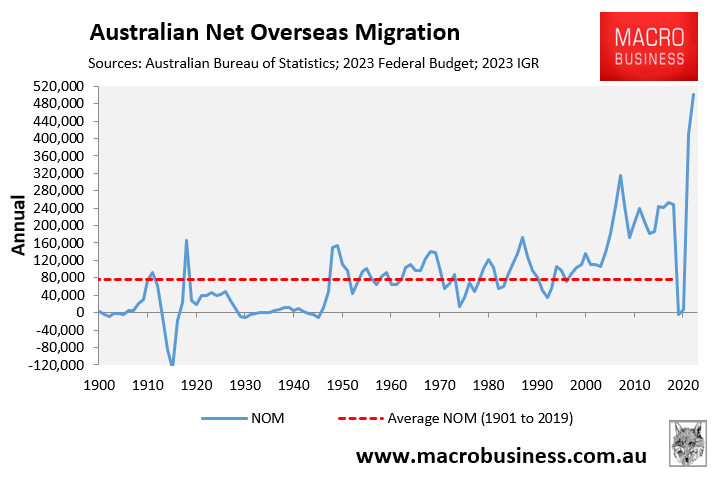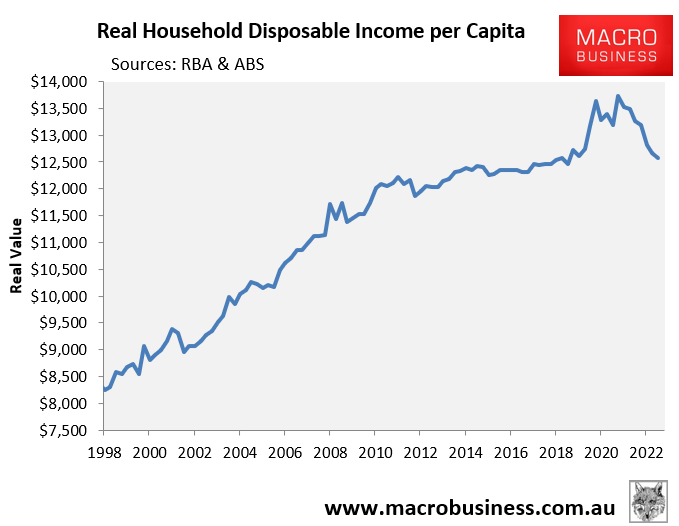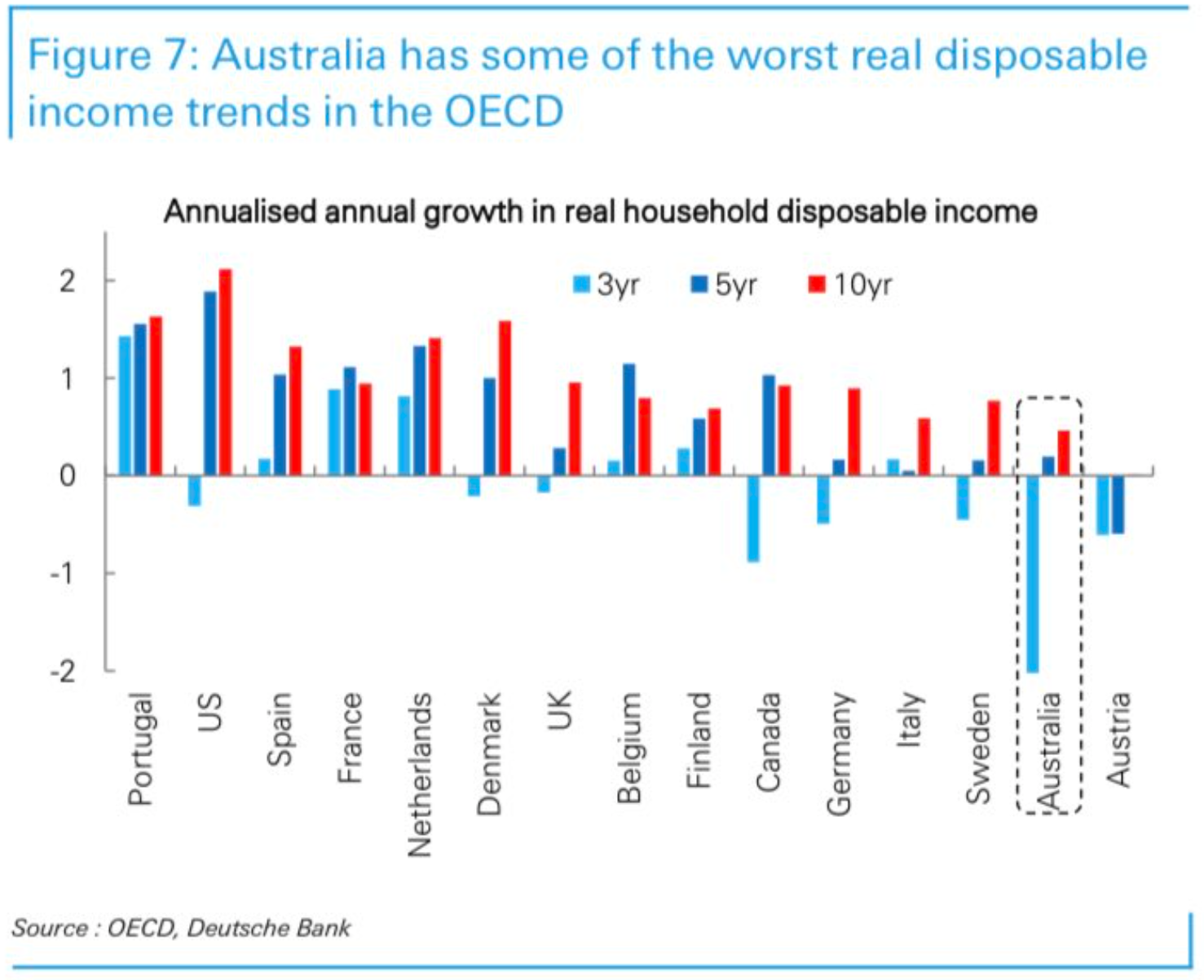Economist Gerard Minack this week published a brilliant analysis explaining how nearly 20 years of historically high immigration has wrecked Australia’s productivity growth and harmed living standards.

The key chart is below, which shows that Australia has suffered severe capital shallowing as infrastructure, housing and business investment has failed to keep pace with rapacious population growth:

“Australia’s economic performance in the decade before the pandemic was, on many measures, the worst in 60 years”, notes Minack.
“Per capita GDP growth was low, productivity growth tepid, real wages were stagnant, and housing increasingly unaffordable. There were many reasons for the mess, but the most important was a giant capital-to-labour switch: Australia relied on increasing labour supply, rather than increasing investment, to drive growth”.
“Australia’s population-led growth model was a demonstrable failure in the 15 years prior to the pandemic. Remarkably, the country now seems to be doubling down on the same strategy. The result, unsurprisingly, is likely to be more of the same”, warns Minack.
Minack’s assessment mirrors many of the same arguments that I have made about Australia’s mass immigration policy over the past decade (most recently this month).
This policy is a key reason why Australia recorded the world’s worst decline in real per capita household disposable income last financial year, according to an analysis of OECD data by The AFR’s Michael Read:

It would be easy to put this decline down to an anomaly or timing, except that Australia’s real per capita household disposable income has recorded barely any growth since 2010:

Indeed, the below Deutsche Bank chart posted on Wednesday by David Taylor at The ABC shows that Australia has also experienced the largest three-year collapse in household disposable income, alongside the second weakest 10-year growth:

When will economists and policymakers finally acknowledge the truth that Australia’s world-beating mass immigration policy has sent Australians plunging down developed country living standards rankings?

